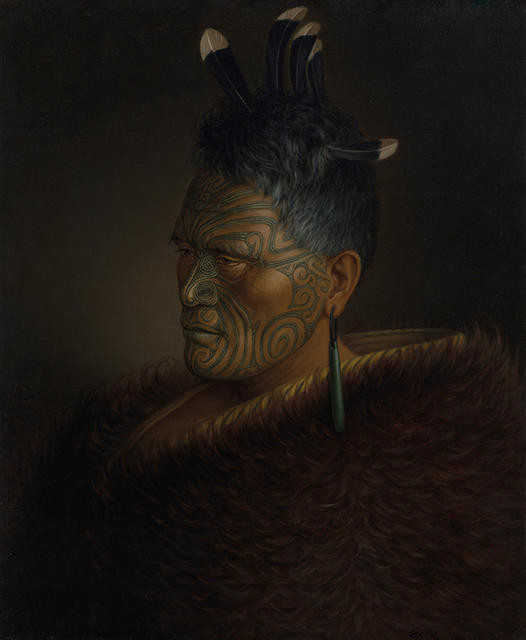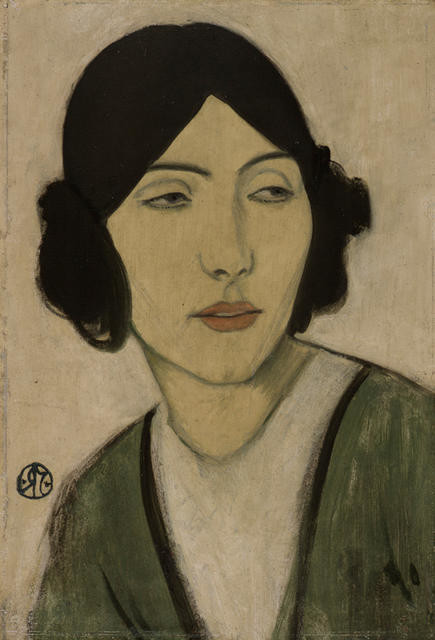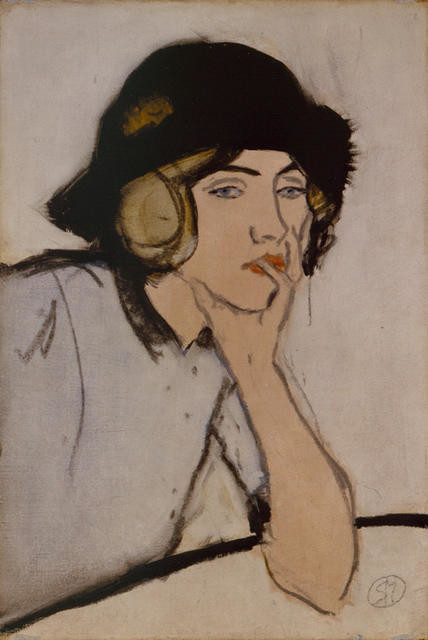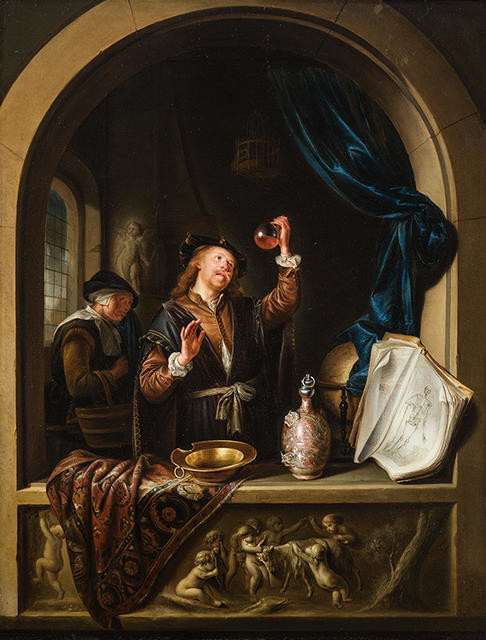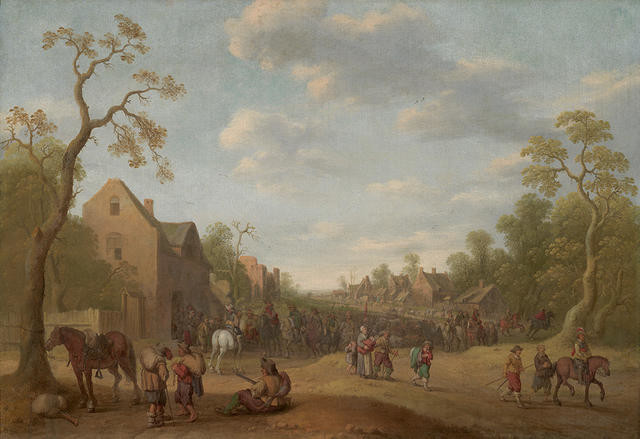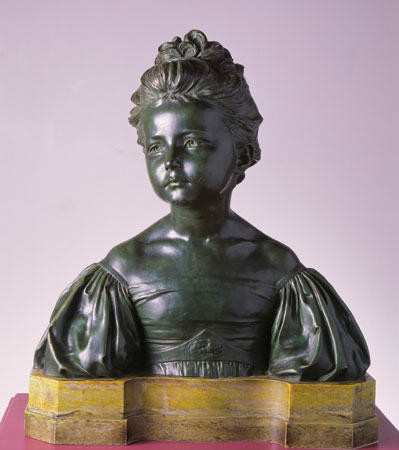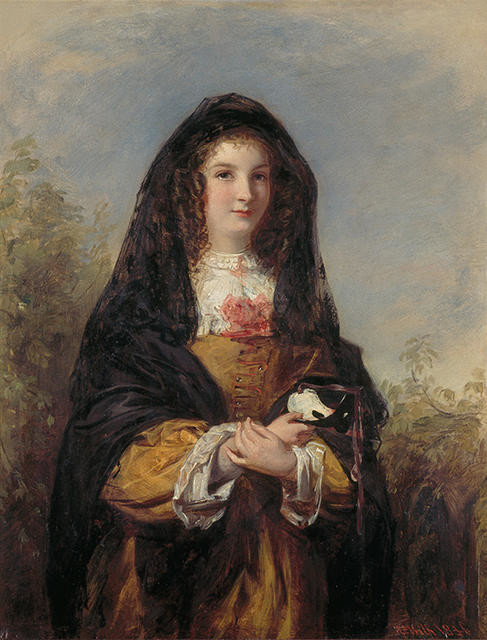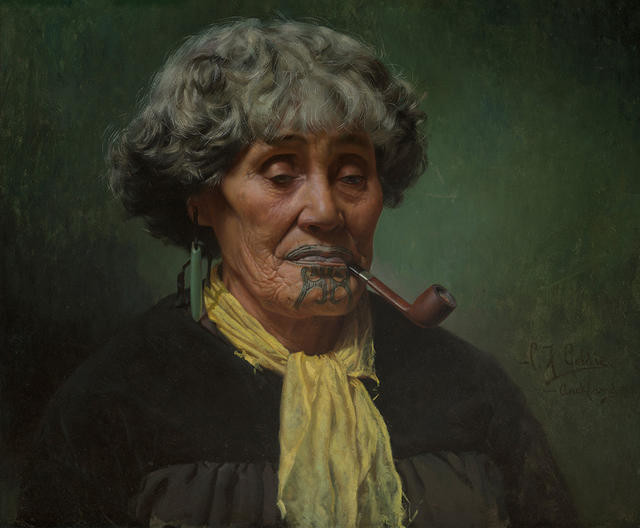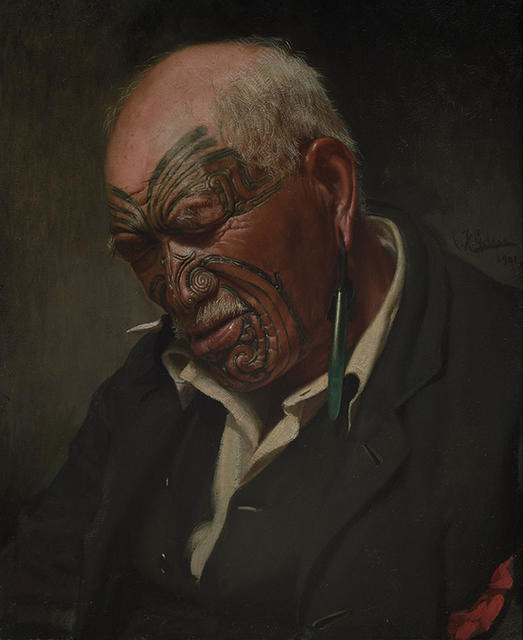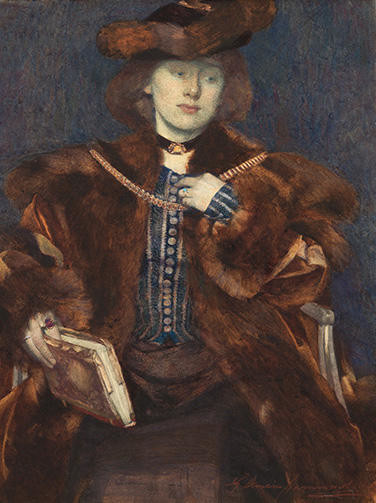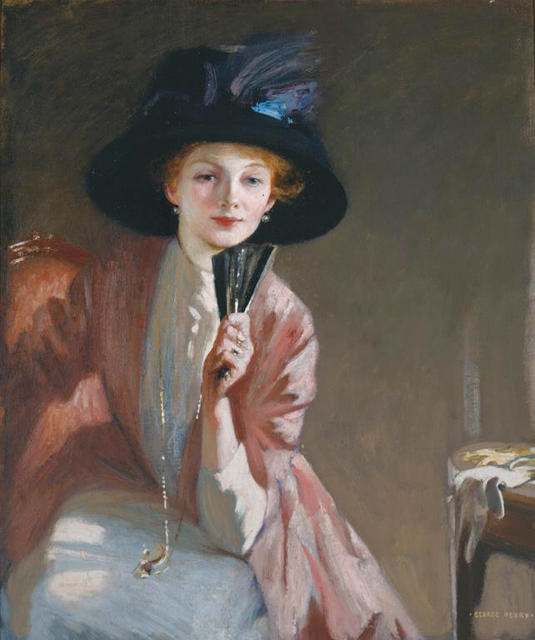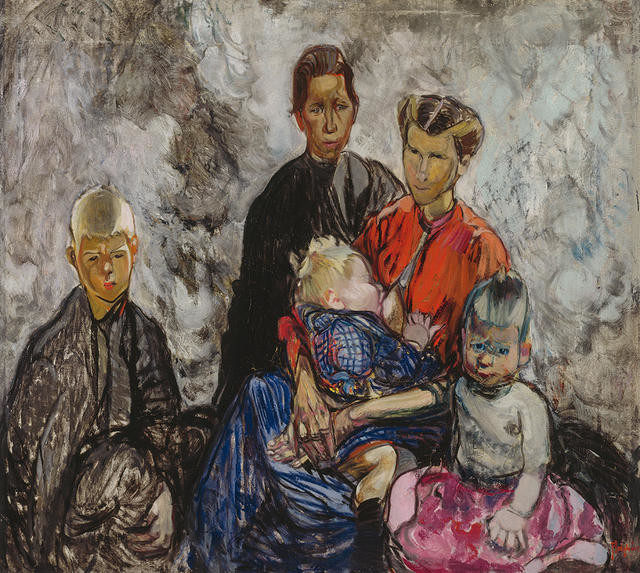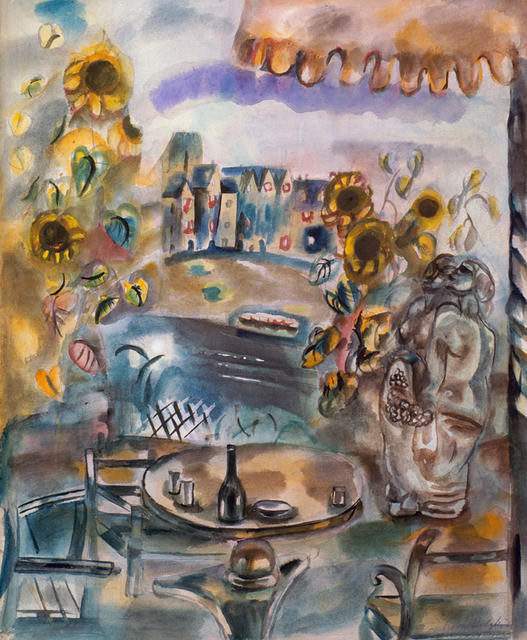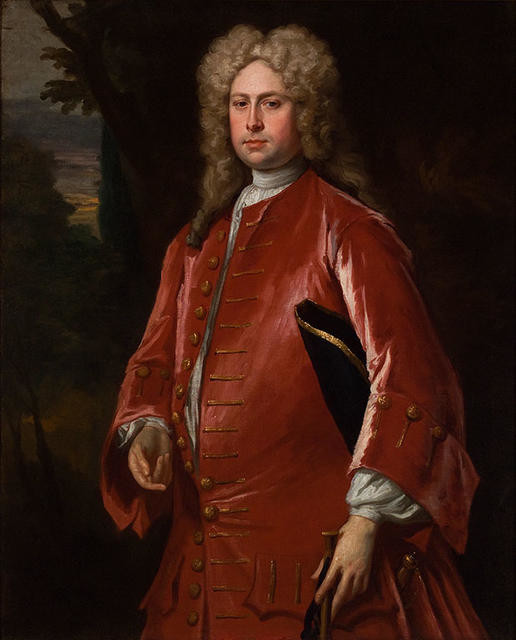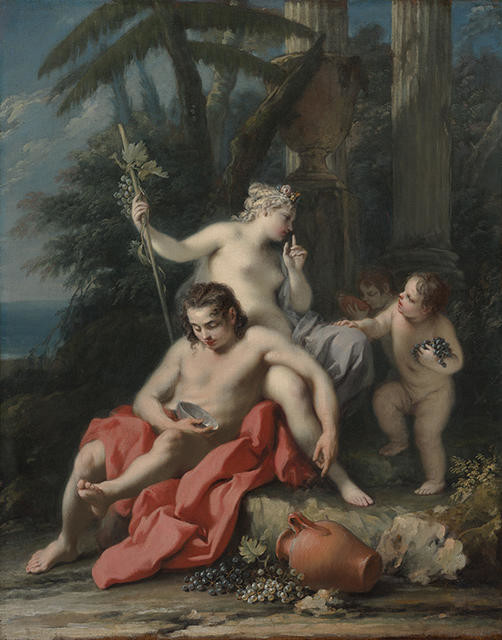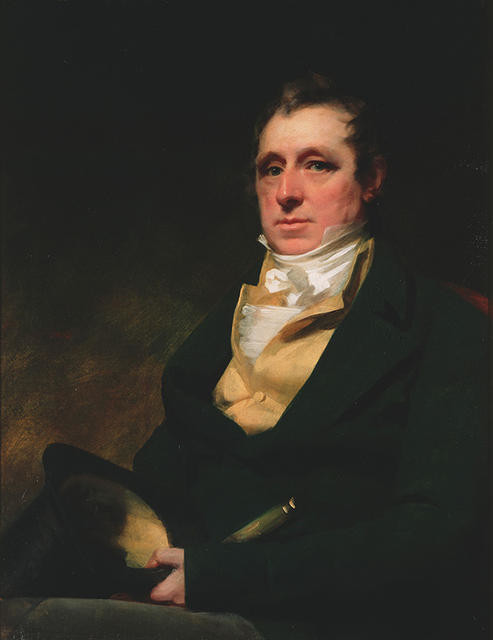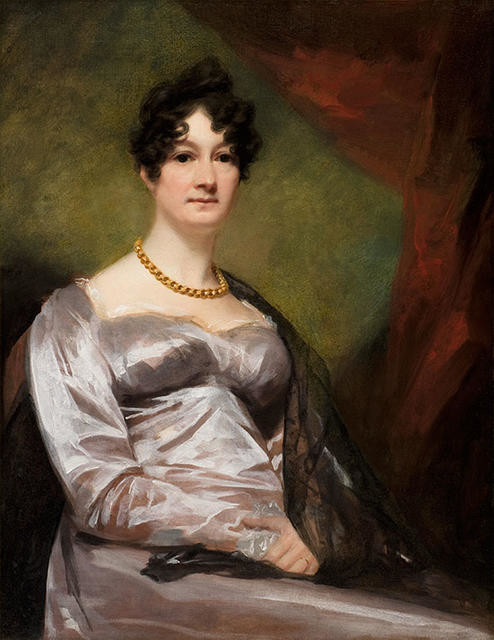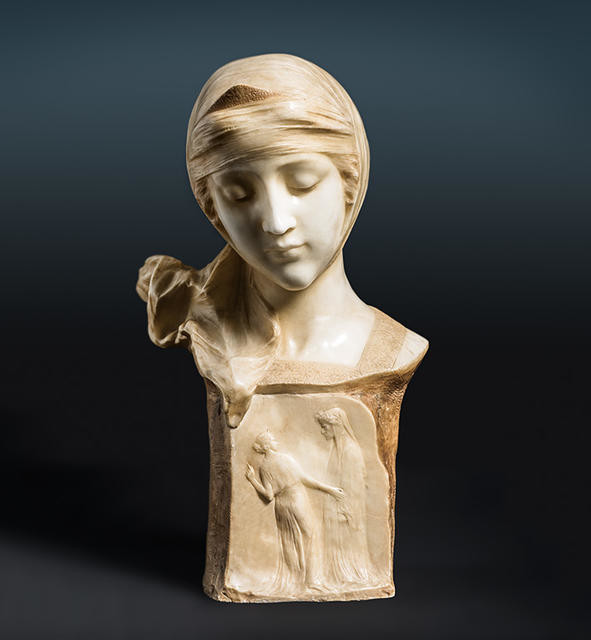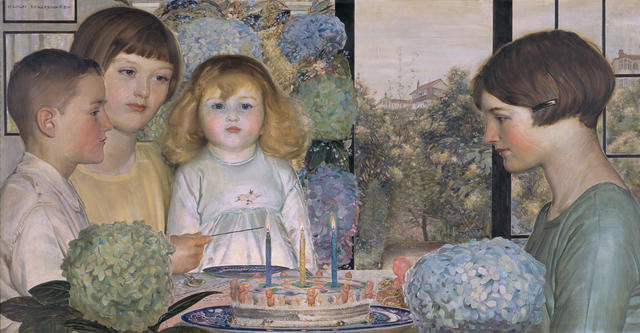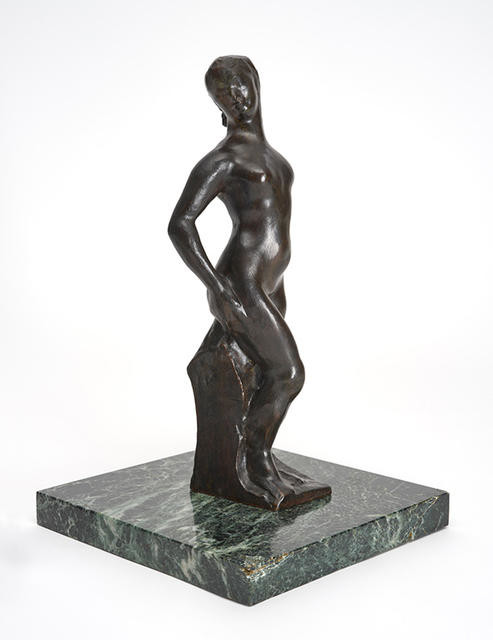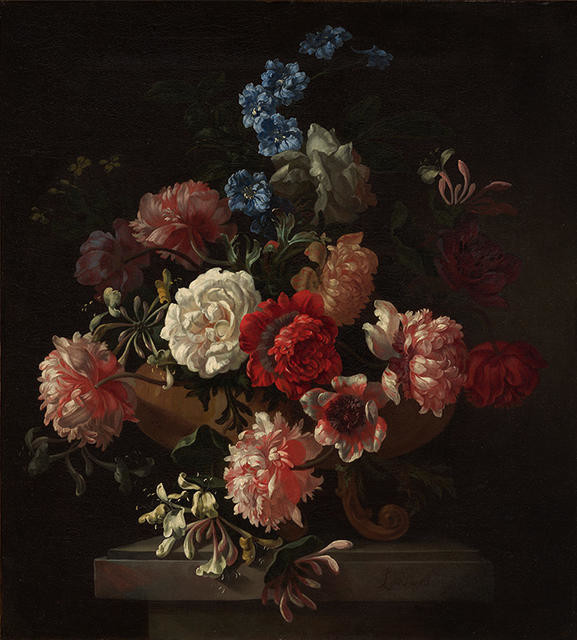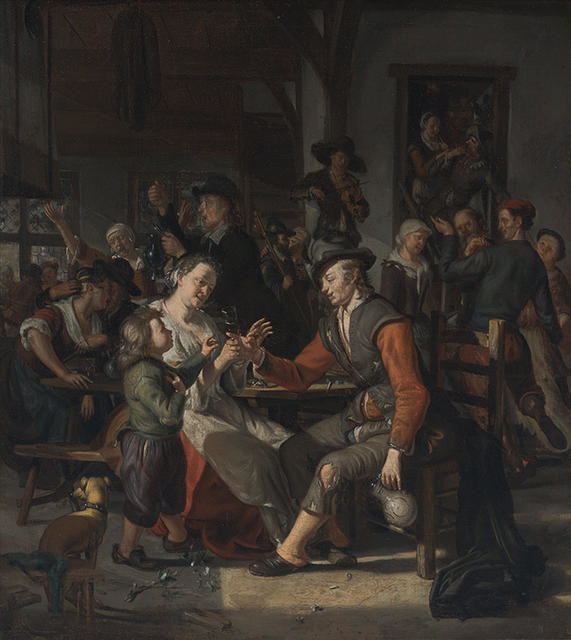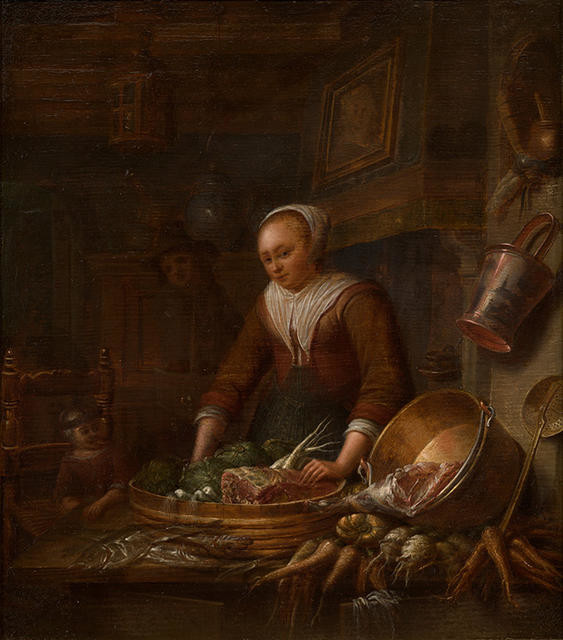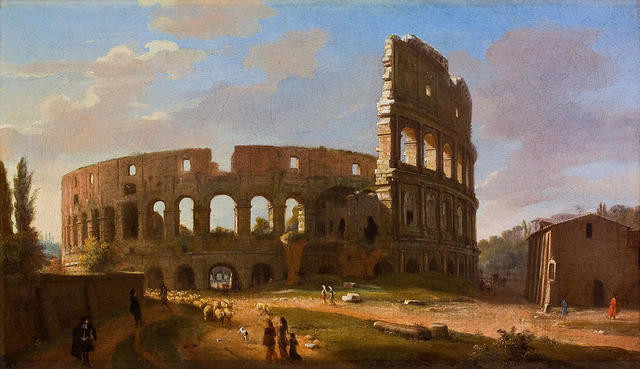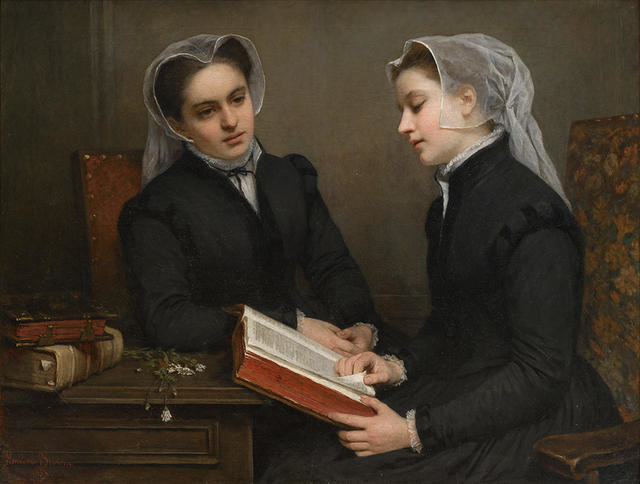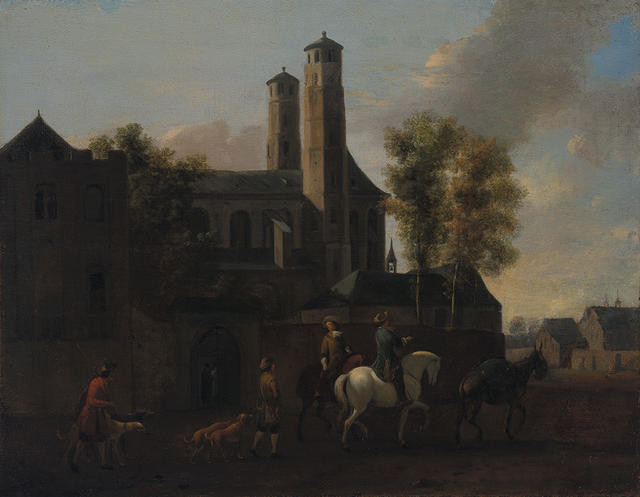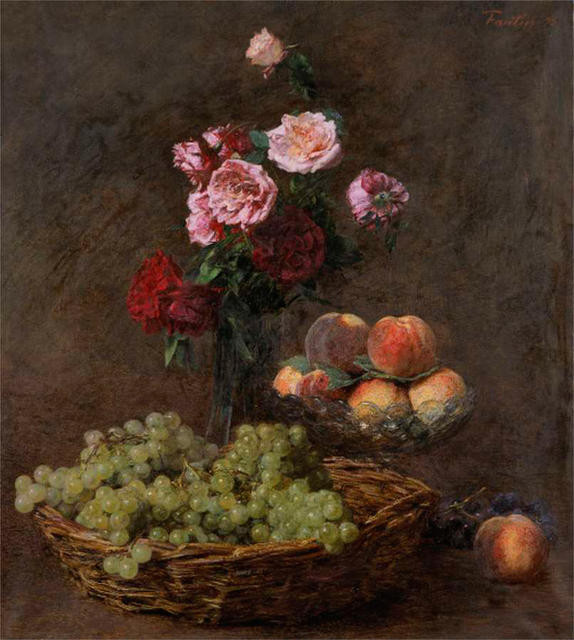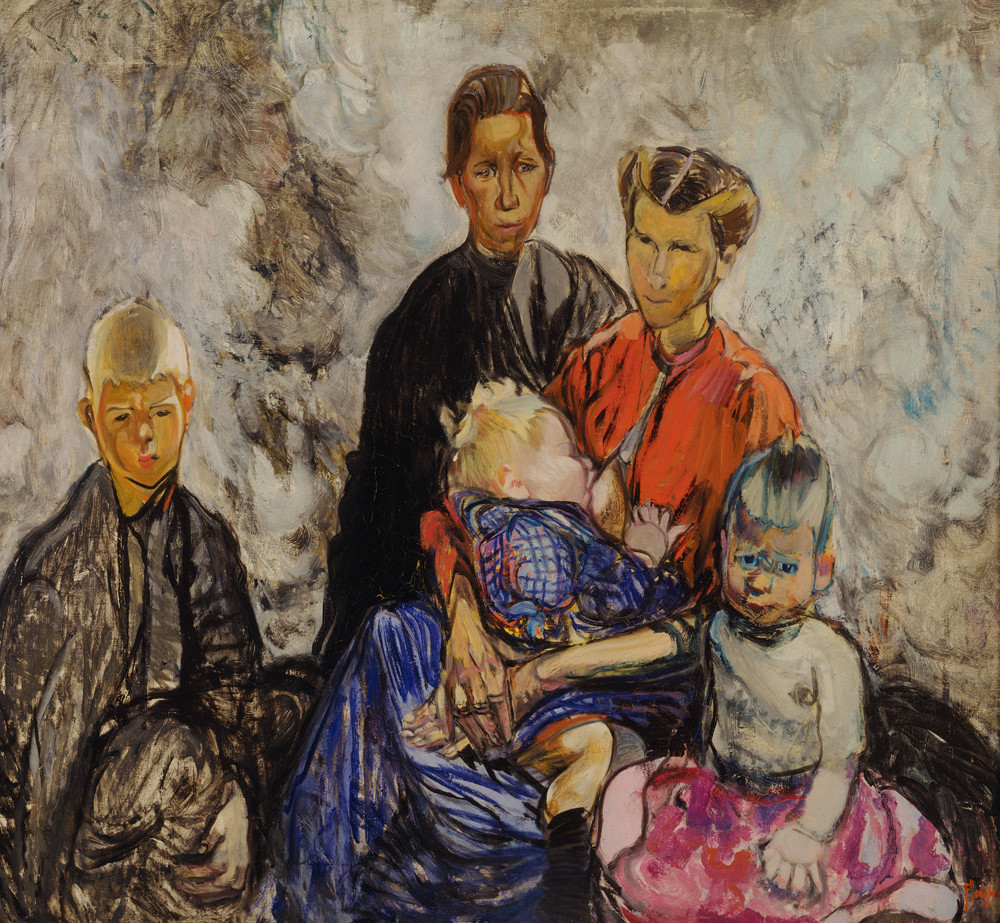Meindert Hobbema
Netherlands, b.1638, d.1709
A Wooded Landscape with Peasants on a Path and an Angler at a Stream
- c. 1662
- Oil on panel
- Kathleen Stuart Hutton Bequest Fund, 1994
- 440 x 610mm
- 94/21
Location: Burdon Family Gallery
Tags: buildings (structures), clouds, houses, landscapes (representations), people (agents), rivers, trees
Although under-recognised in his own lifetime, Amsterdam-based Meindert Hobbema is now seen as one of the greatest landscape painters of the Dutch Golden Age. Hobbema’s exclusive focus on countryside relates to the extraordinary growth of Dutch cities and towns in this period, and a newfound desire for idealised depictions of rural life.
(Out of Time, 23 September 2023 – 28 April 2024)
Exhibition History
Endless Light, 29 June 2019 – 8 March 2020
At around the age of seventeen, the orphaned Meindert Hobbema met Jacob van Ruisdael, an artist considered the pre-eminent landscape painter of the Dutch Golden Age, who would teach him how to become an artist. Painted around ten years later, A Wooded Landscape with Peasants on a Path and an Angler at a Stream shows Hobbema proceeding on his own merit and demonstrating his own style. The lowered horizon line creates a big sky, which is animated by rolling clouds in silvery blues, greys and bright whites. Their forms are continued in the treetops and knotted branches that frame and obscure the scene, which recedes almost endlessly into the distance, to reveal fields flooded by sunlight and the understated silhouette of a church.
The Weight of Sunlight, 16 September 2017 - 16 September 2018
Meindert Hobbema’s exclusive focus on the countryside has been seen as relating to the extraordinary expansion of the Dutch nation’s towns and cities during his lifetime, which he spent in Amsterdam, and to urban art buyers’ newfound taste for idealised depictions of rural life. Although under-recognised in his own lifetime, Hobbema is now celebrated as one of the greatest landscape painters of the Dutch Golden Age. Born a carpenter’s son and living in an orphanage at age 15, Hobbema was apprenticed two years later to the landscape painter Jacob van Ruisdael – his most important influence. Hobbema liked to work with a continual rearrangement of a restricted group of elements. Nearly always, a large tree dominates the composition, with everything else – smaller trees, paths, pools and streams, decaying farmhouses or watermills – carefully placed, inviting the viewer to read and enter his pictures in layers.
Treasury: A Generous Legacy, 18 December 2015 – 4 December 2016
Although little recognised in his own lifetime, the Amsterdam-based Meindert Hobbema is now celebrated as one of the greatest landscape painters of the Dutch Golden Age. Hobbema’s exclusive focus on countryside relates to the extraordinary growth of Dutch cities and towns in this period, and a newfound interest in idealised depictions of rural life.
This exquisite landscape painting came to New Zealand after being purchased at auction in London in 1908 by the Dunedin-trained architect and art teacher David Edward Hutton (1866–1946). Its acquisition for the collection was enabled through funds generously bequeathed by his daughter Kathleen Stuart Hutton (1903–1992).
Meindert Hobbema specialised in highly detailed landscapes such as this. Although it is painted in the careful, precise manner typical of Dutch realist painting from the 17th century, it is not an exact description of a specific country view. The details have been selected and arranged to make a more pleasing scene. The figures and the buildings add to the human interest, while the small and precise detail of the plant forms give it a sense of authenticity. Hobbema was born in Amsterdam where he remained based throughout his career. In his early years he was apprenticed to Jacob van Ruisdael (c. 1628 -1682) whose style had a great effect on Hobbema. He became an excise officer in 1668 and appears to have painted in his spare-time from this date on. Hobbema was particularly admired by English landscape painters and his work influenced the early landscapes of Thomas Gainsborough (1727-1788) and John Crome (1768-1821).
(Label date unknown)
This 17th century Dutch landscape displays the careful realism for which the Dutch artists were renowned. Based on sketches and studies the artist made in the countryside, the details have then been selected and arranged to make a more pleasing scene than an exact description of a specific place. The figures and the buildings add to the human interest, while the small and precise detail of the plant forms give the scene a sense of authenticity. The broken sunlight, supported by a carefully observed cloudy sky, throws zones of light horizontally across the fields, a device which, along with the oblique line of the path and the church on the horizon, helps with the illusion of space.
(Label date unknown)
This work was earlier attributed to Meindert Hobbema who was born in Amsterdam around 1638. Hobbema was a contemporary of the important Dutch landscape painter Jacob van Ruisdael. Few details of his life are known except that Hobbema married in 1688 and died in poverty in Amsterdam in 1709. Because we cannot now be certain who the artist of this work is, we label it the 'School of Hobbema' as it has many features similar to his works. He favoured scenes where villages were surrounded by trees and crossed by winding pathways. Considered particularly truthful, Hobbema's compositions were also characterised by the use of a warm golden tone throughout.
(Label date unknown)
![Andreas Cellarius Hypothesis Ptolemaica Sive Communis Planetarum Motus Per Eccentricos Et Epicyclos Demonstrans [The Ptolemaic Hypothesis or Common Representation Demonstrating the Planetary Motions through Eccentrics and Epicycles] 1661. Hand-coloured engraving. Collection of Christchurch Art Gallery Te Puna o Waiwhetū, William A. Sutton bequest, 2000](/media/cache/05/97/05970cdff0f6b3264062d69bf2aa90f5.jpg)
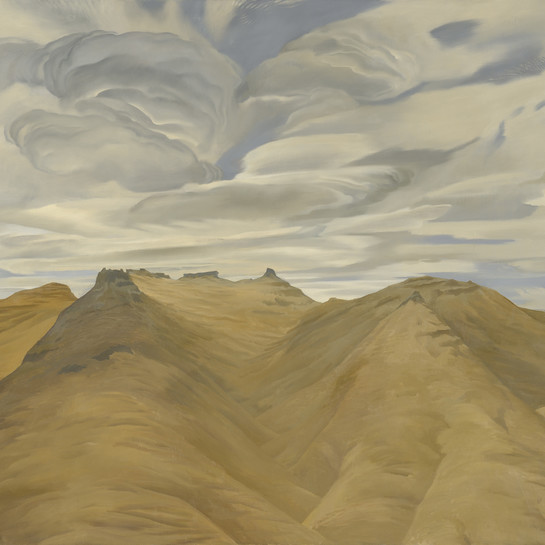
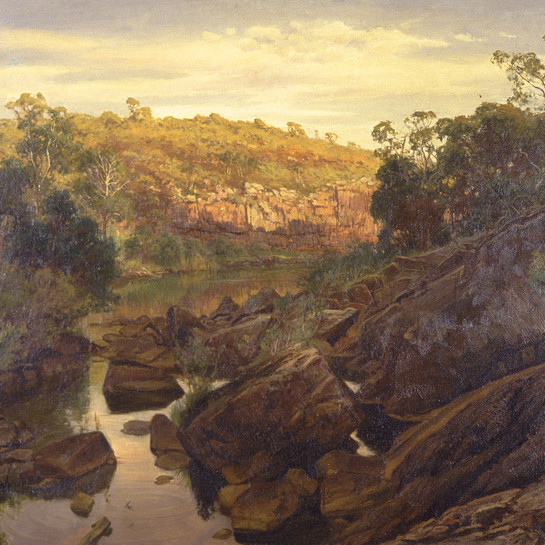
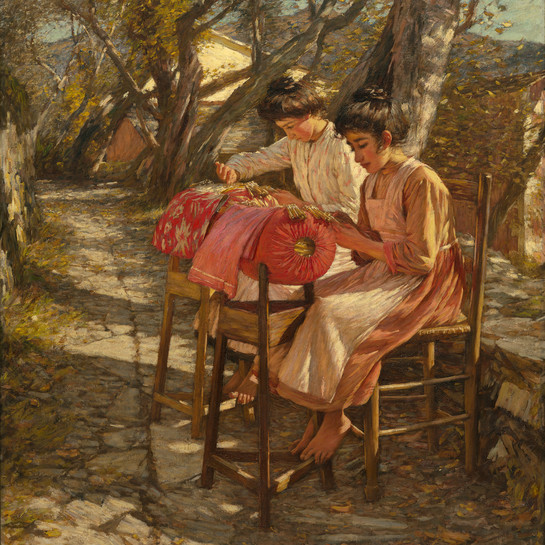
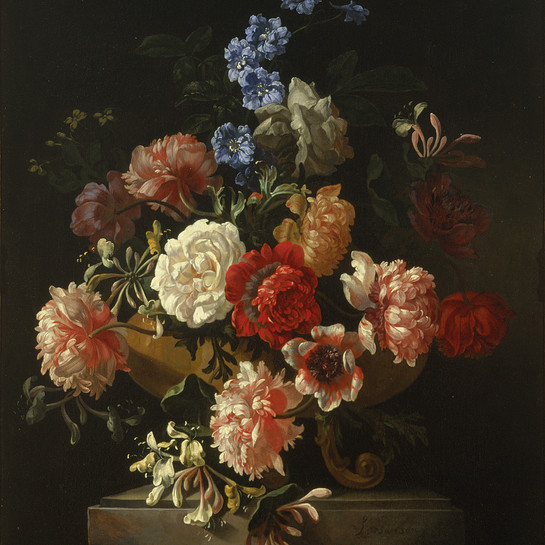
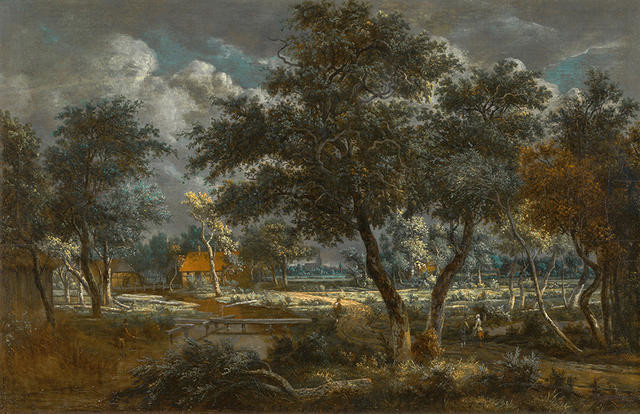
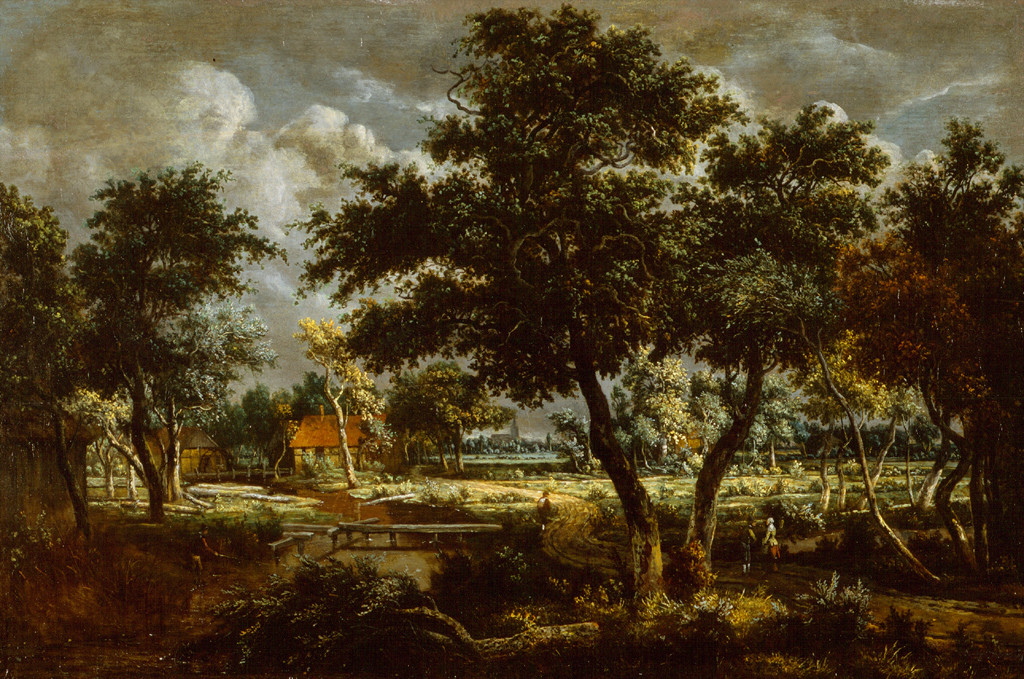
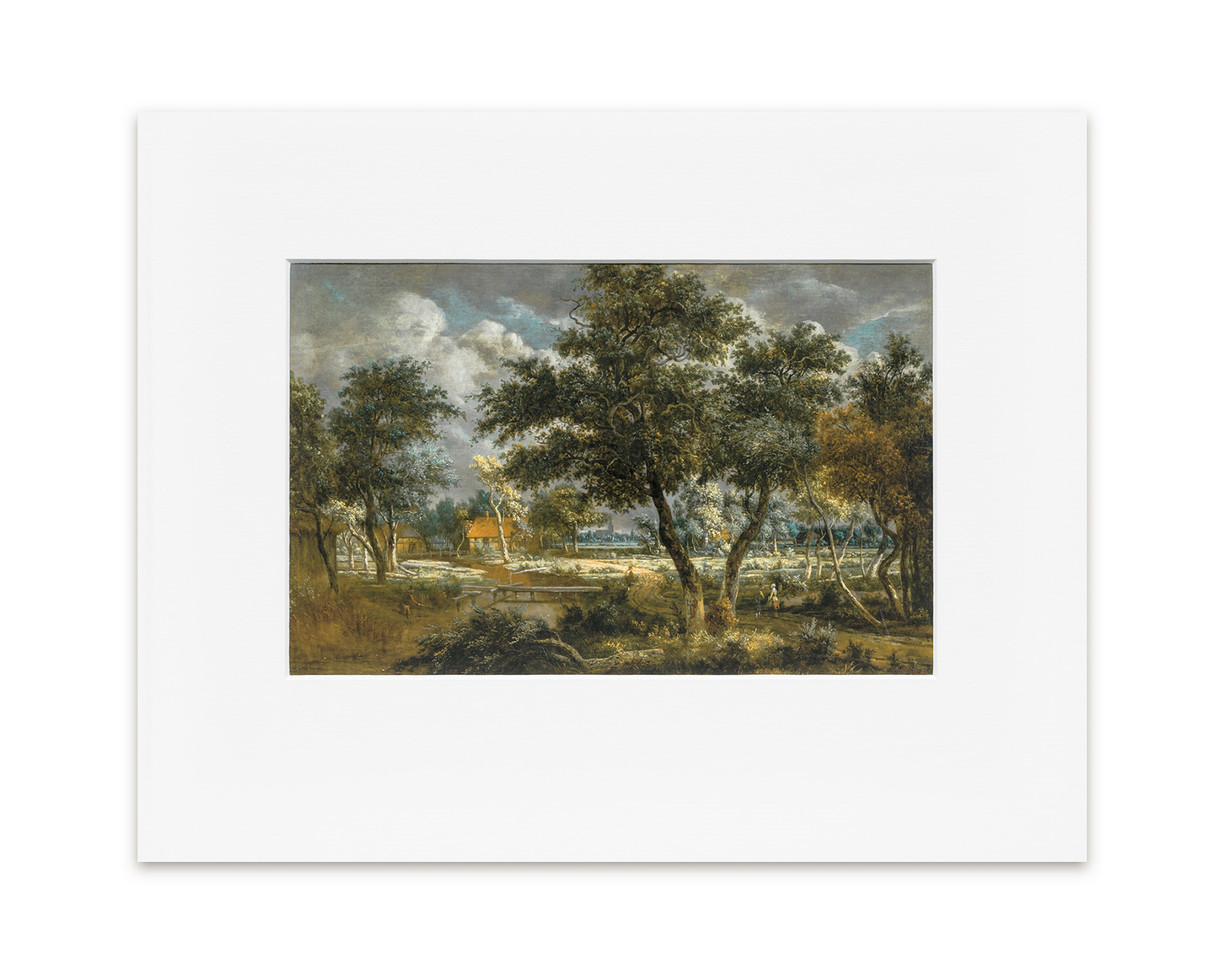
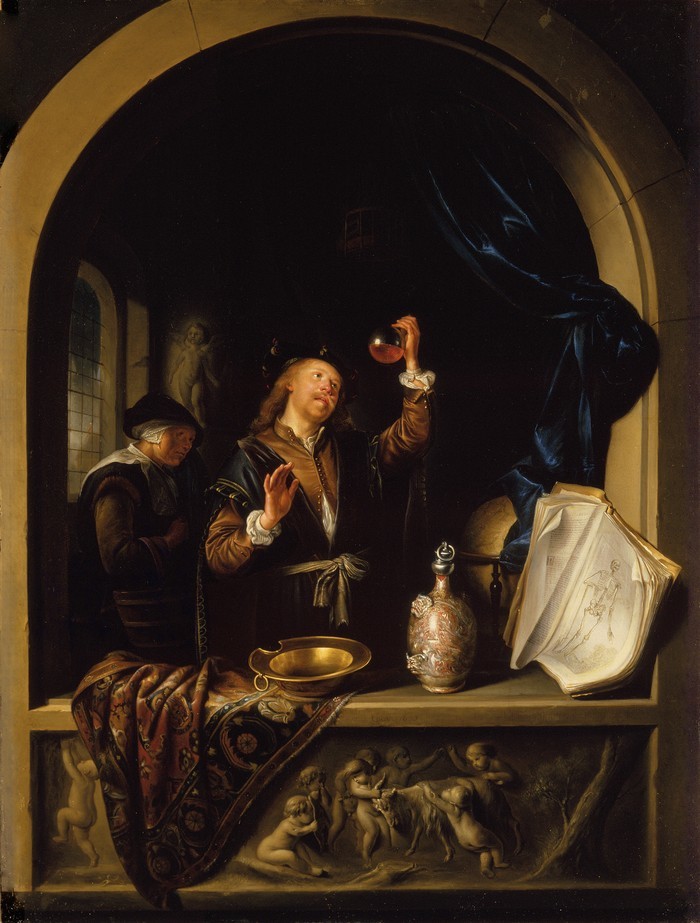
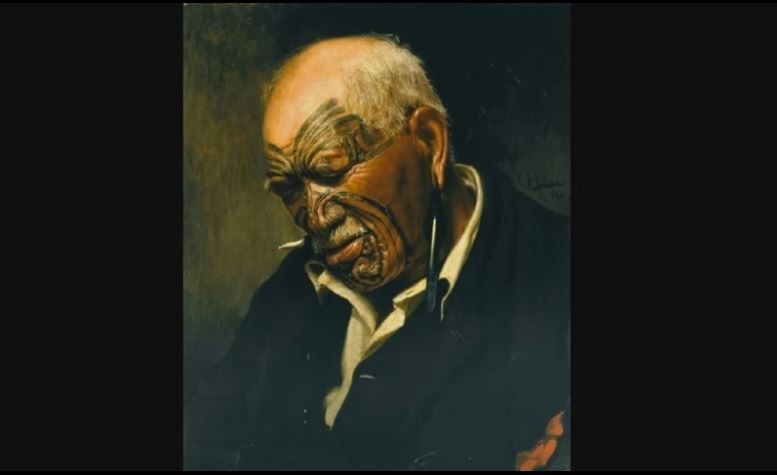
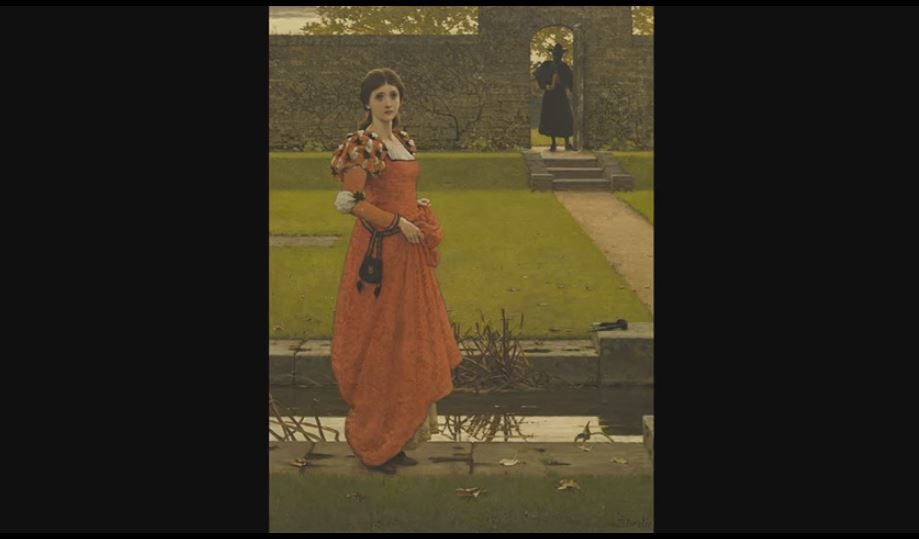
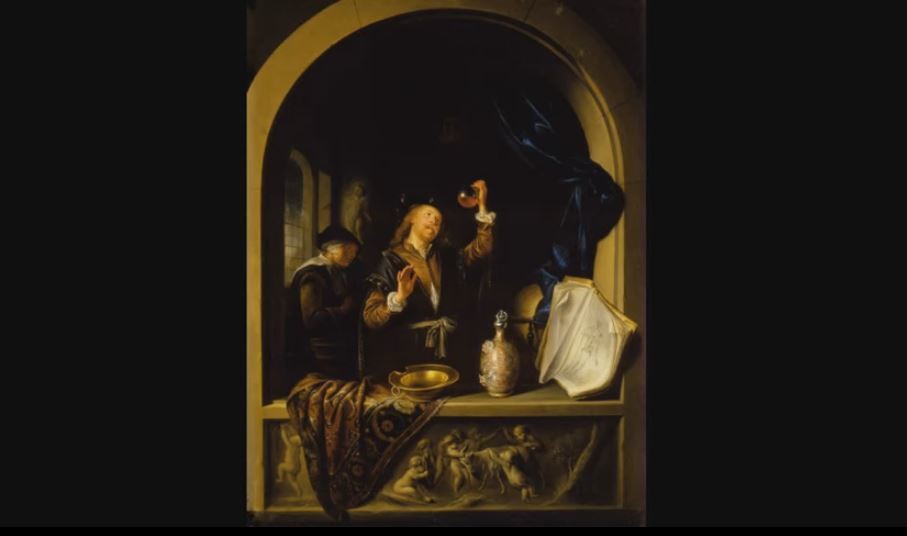
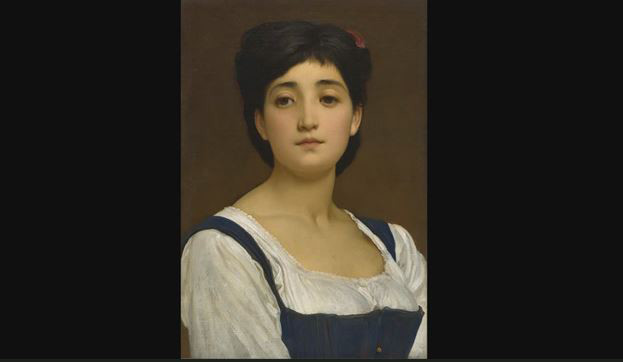
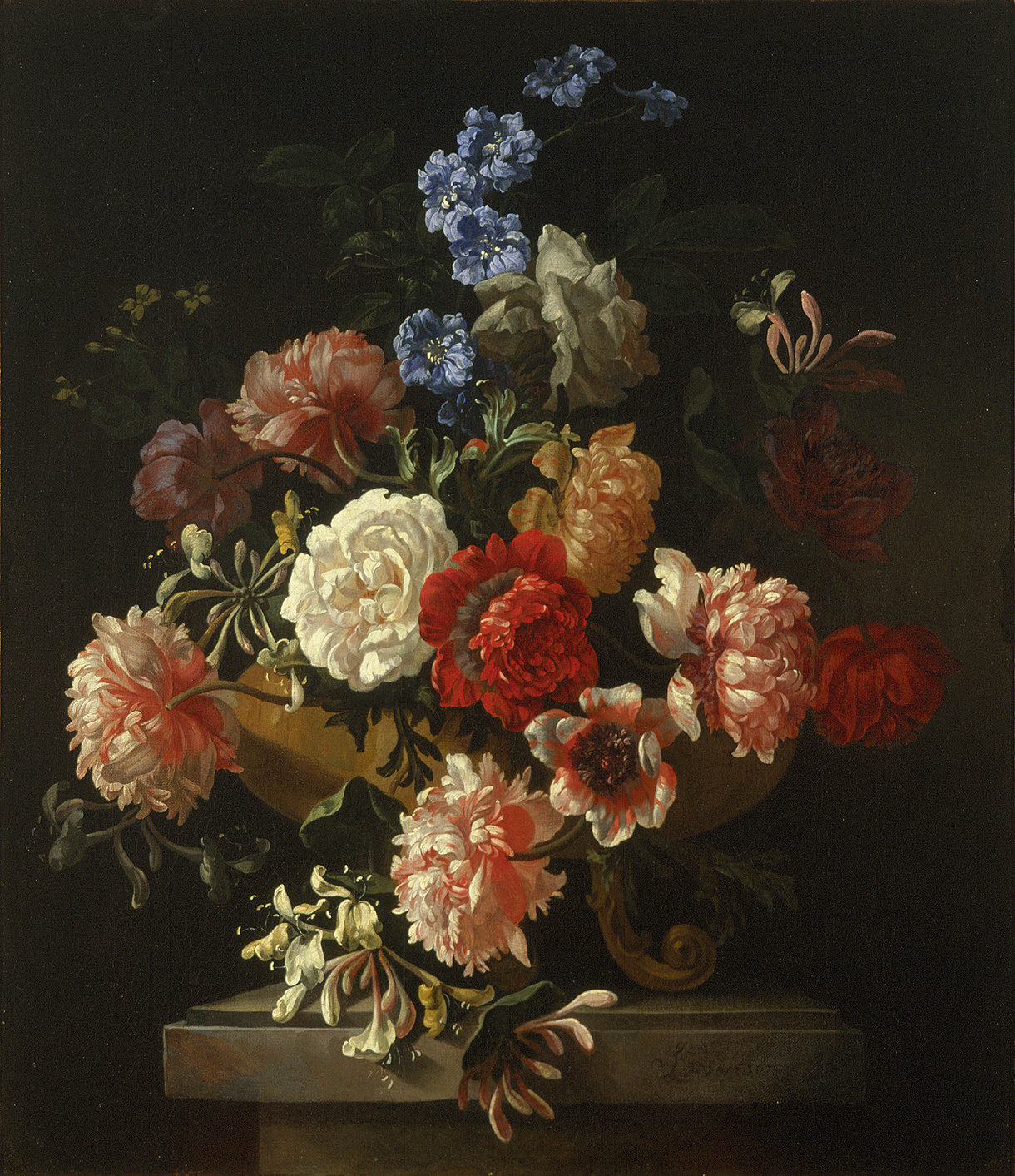
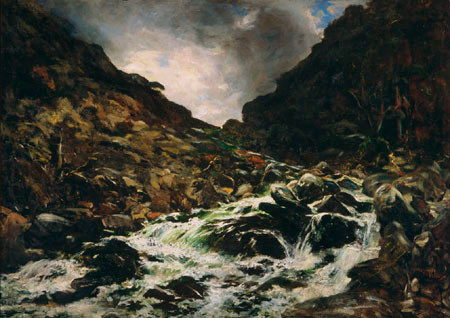
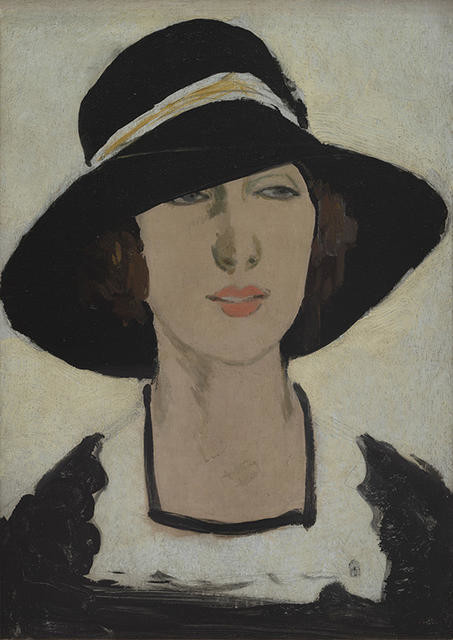
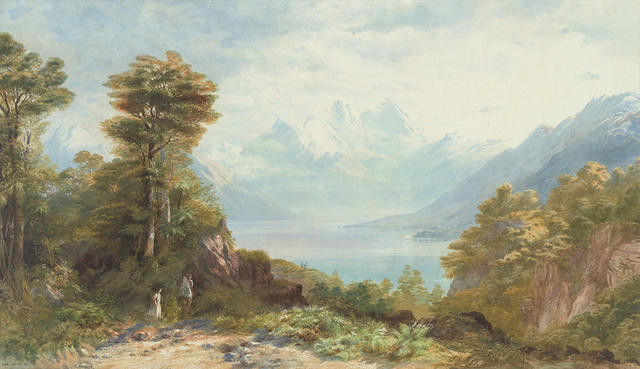
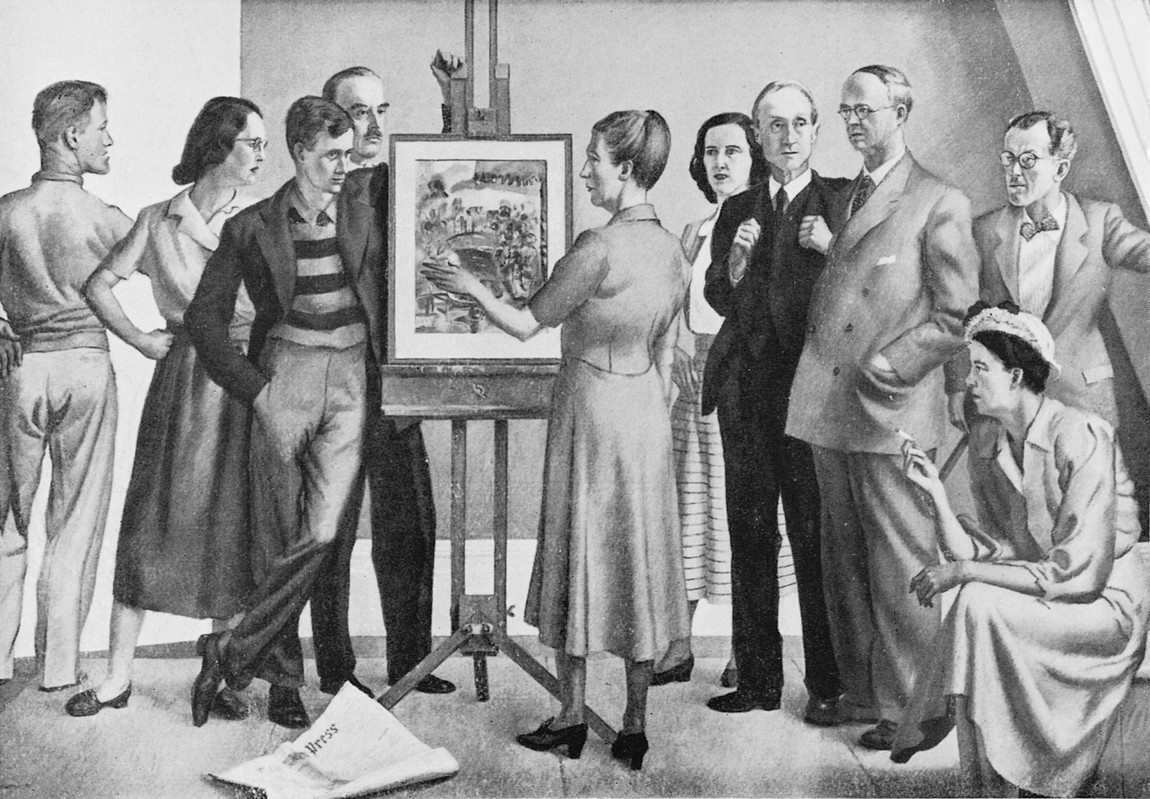
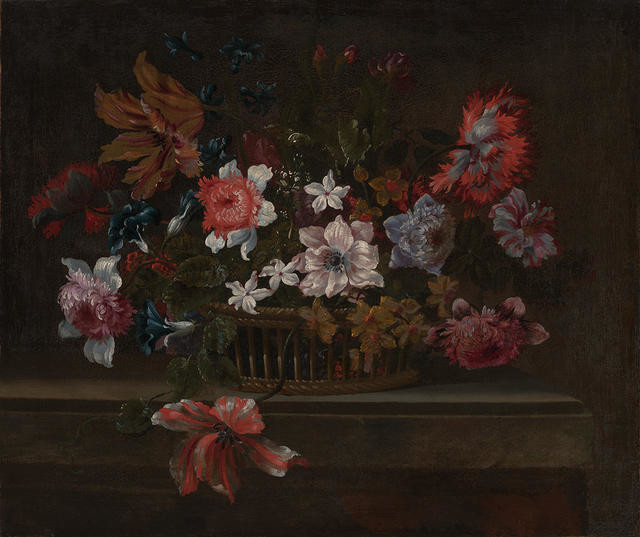
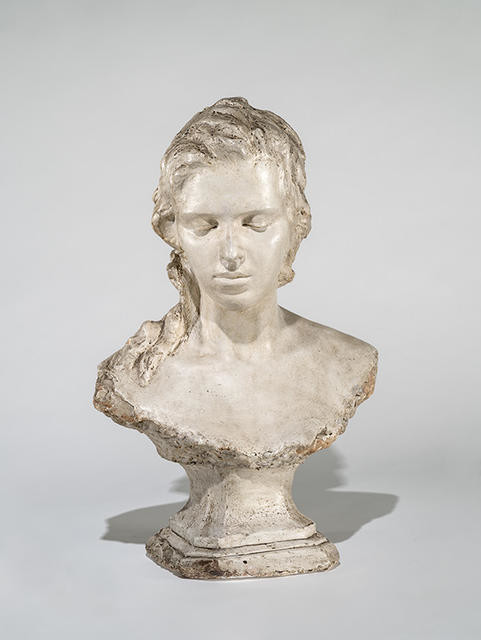
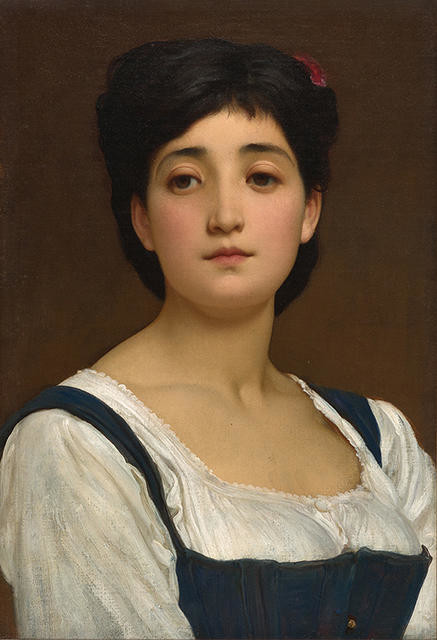
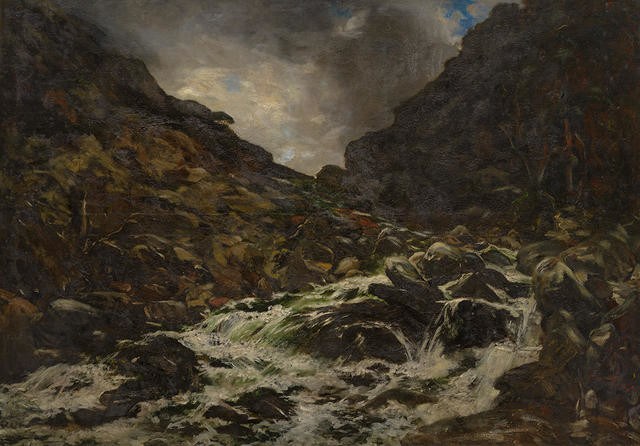
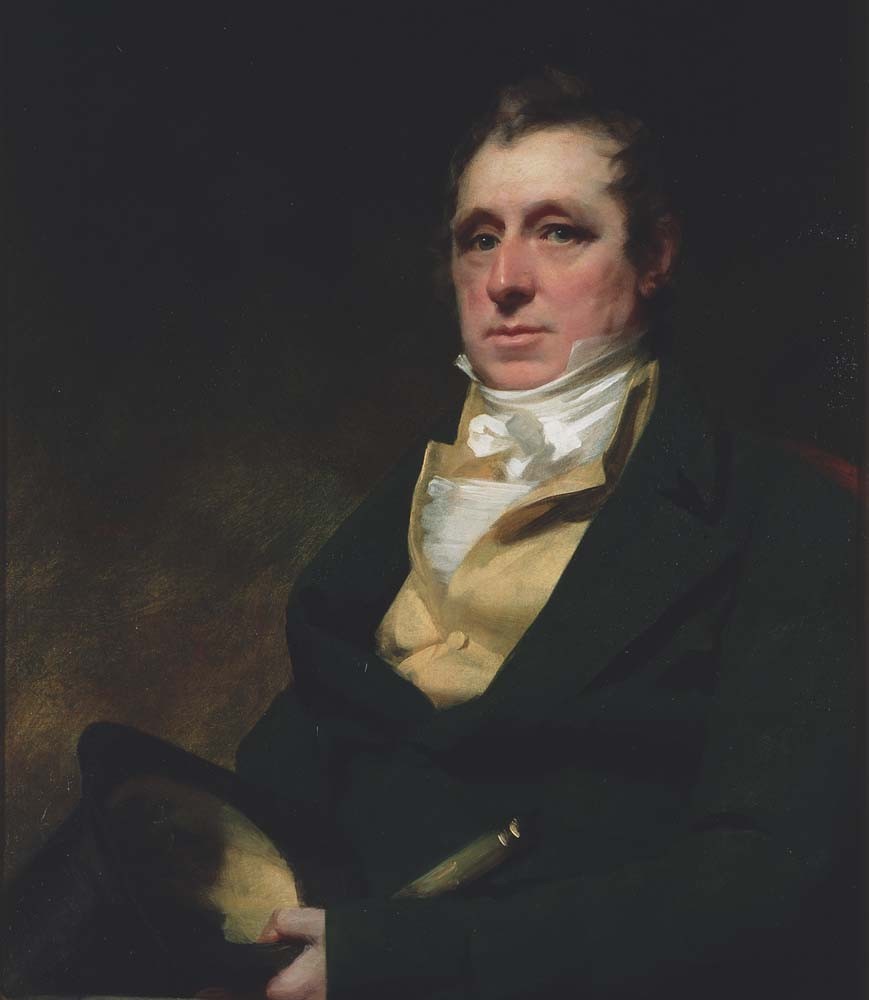
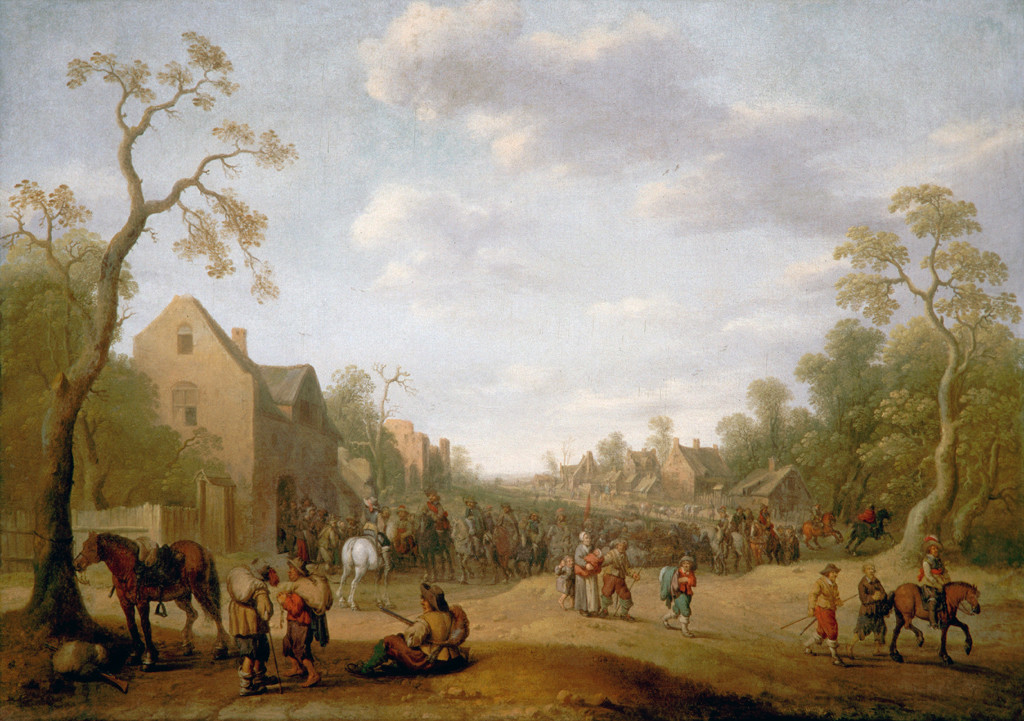
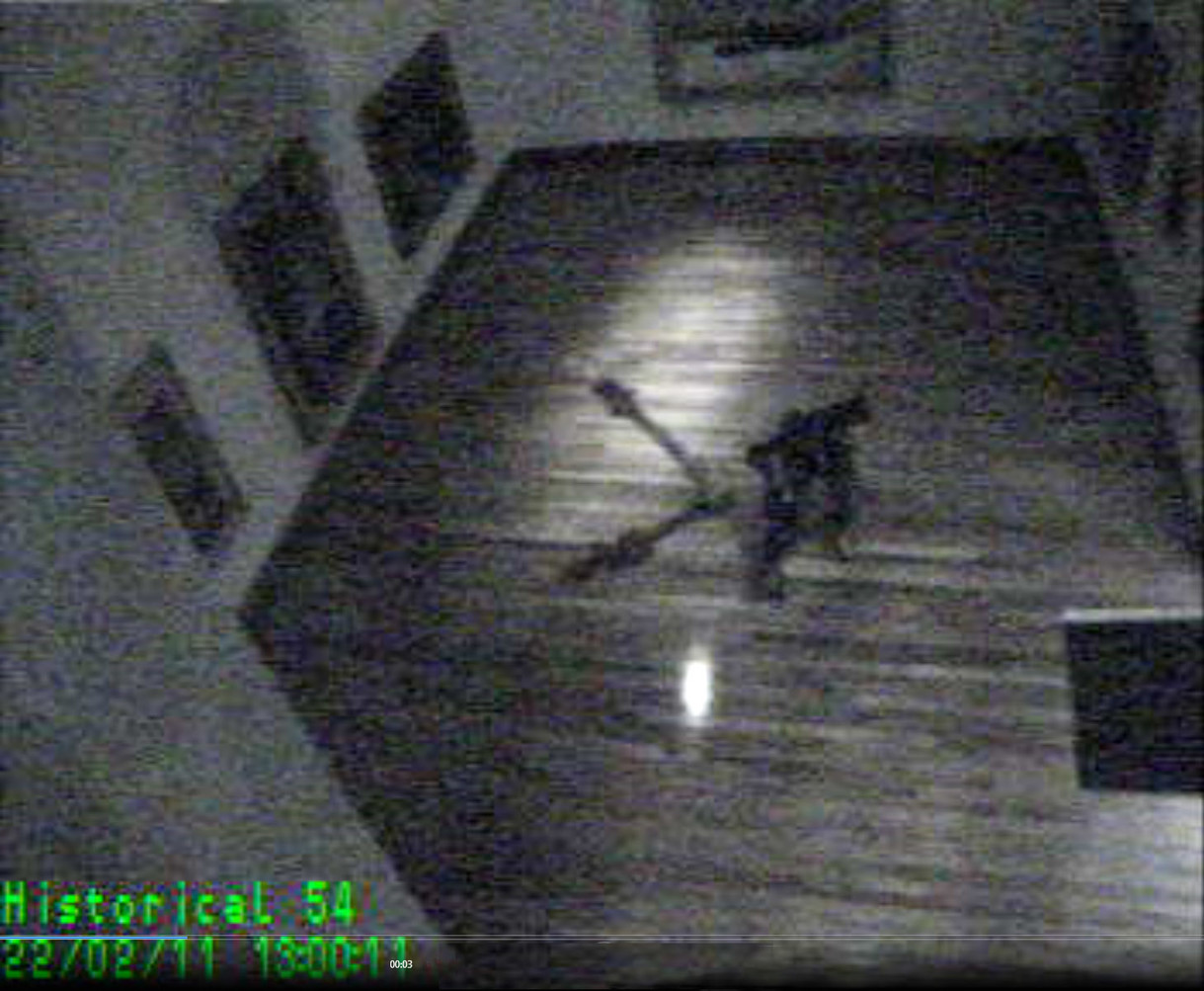
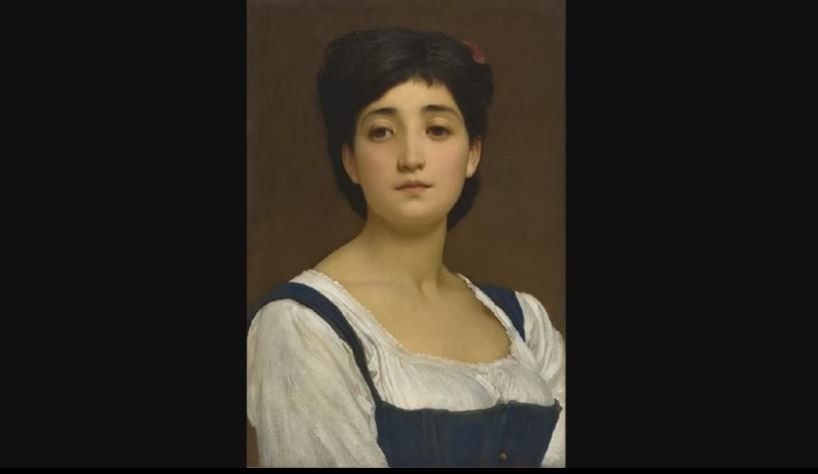
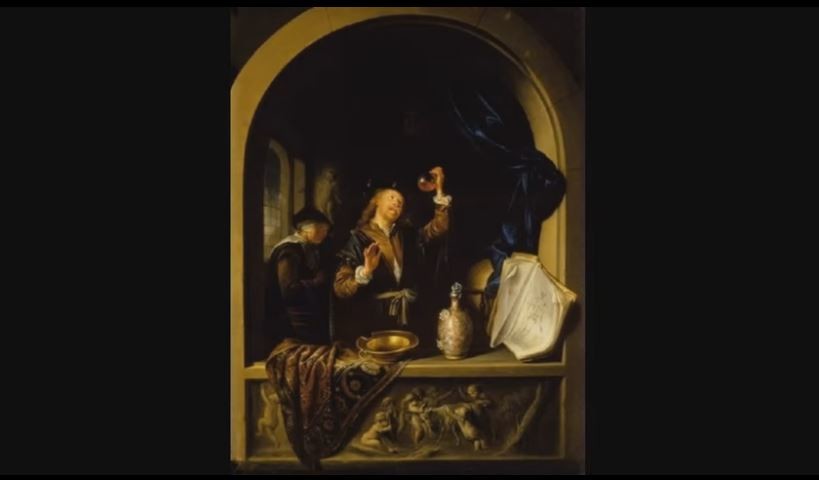
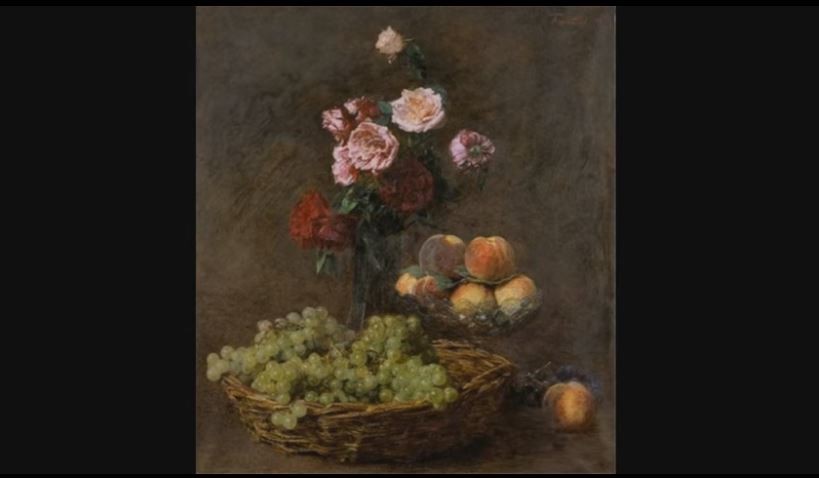
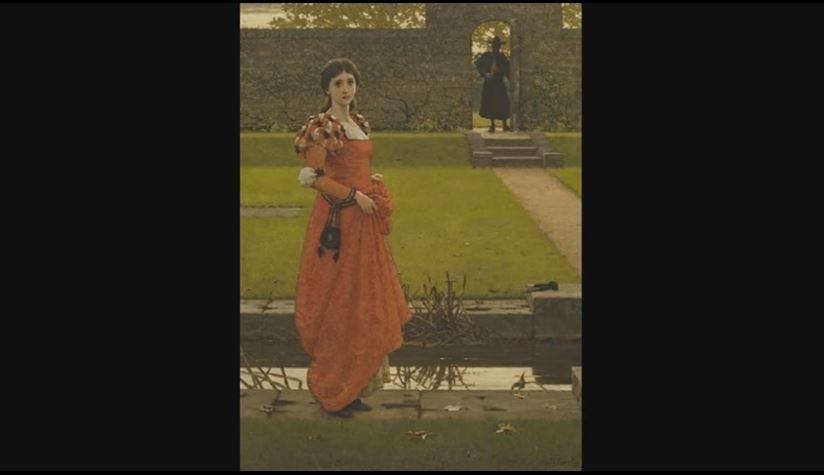
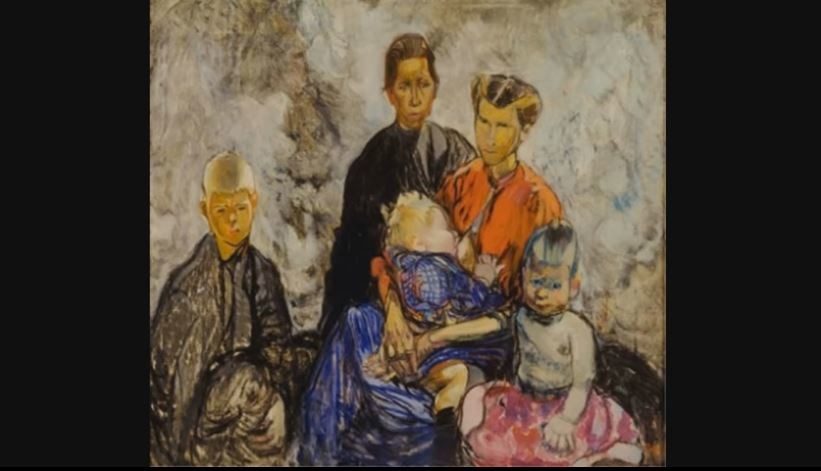
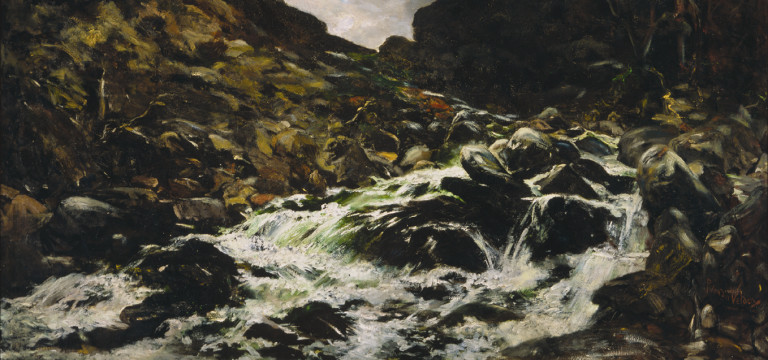
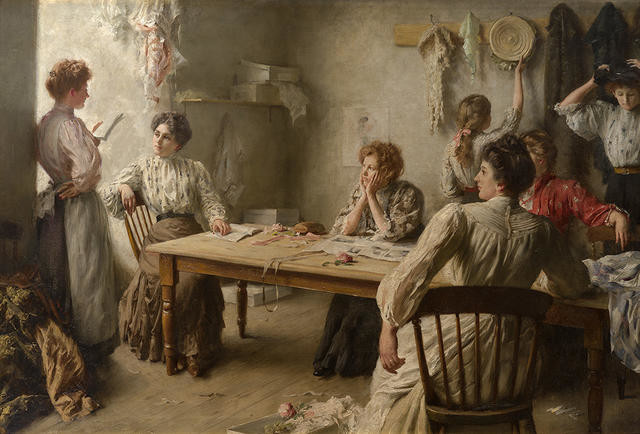
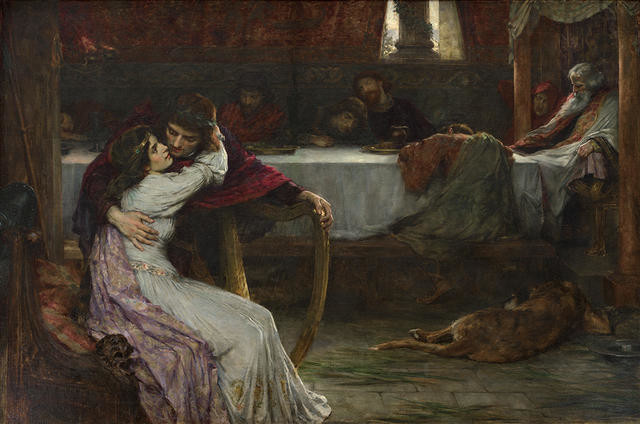
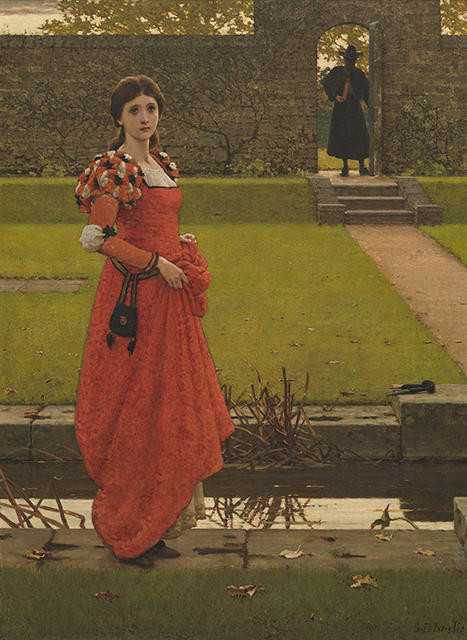
![Ana Reupene Whetuki and Child (Ngāti Maru) [also known as Heeni Hirini and Heeni Phillips]](/media/cache/17/bb/17bb18644f7687a4ddee02089004d733.jpg)
